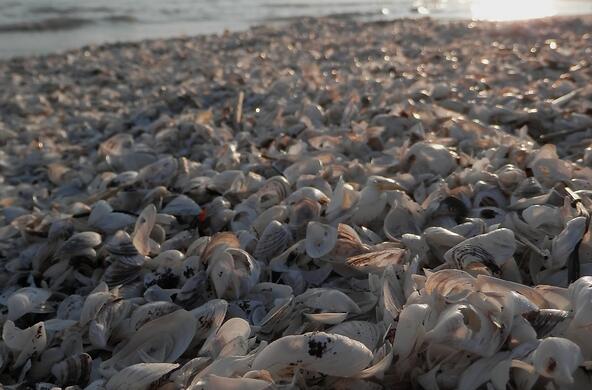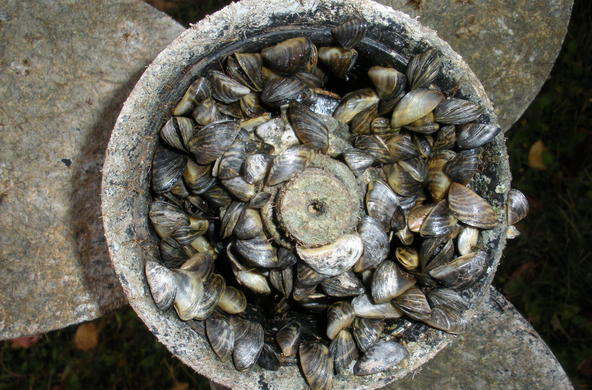Because satisfactory pre-invasion data often are lacking, it has not always been easy to understand the complex changes that these exotic species make to ecosystems. Because our group at Cary began intensive study of the Hudson several years before zebra mussels appeared, we were fortunate enough to be able to document the large and far-reaching impacts of the zebra mussel invasion on the Hudson River ecosystem.
Zebra mussels first appeared in the Hudson in May 1991. Since September 1992, zebra mussels have been dominant in the freshwater tidal Hudson, constituting more than half of heterotrophic biomass, and filtering a volume of water equal to all of the water in the estuary every 1-4 days during the summer. As a result of direct consumption, phytoplankton biomass fell by 80% (Caraco et al. 1997) and zooplankton numbers fell by 70% (Pace et al. 1998). These effects ramified throughout the food web - native suspension feeders declined, presumably in response to the loss of their planktonic food (Strayer and Smith 1996; Strayer and Smith, Arch. Hydrobiol. Suppl. 139: 1-52). Thus, the native pearly mussels of the Hudson, which formerly numbered more than one billion, appear to be on the verge of diappearing from the river.
Recent work done in collaboration with Kathy Hattala and Andy Kahnle of the New York State Department of Environmental Conservation (Strayer et al 2004) shows that the zebra mussel invasion was associated with large changes in the fish community, as open-water fish (shad and herring) suffered and littoral fish (sunfish) prospered. Thus, the zebra mussel invasion had large effects on many parts of the Hudson's ecosystem, and was one of the largest changes that humans have caused to the Hudson (Strayer et al. 1999).
Until we take the problem of exotic species seriously in this country and adopt more effective controls on the movement and establishment of exotic species, our ecosystems will continue to change in large and unexpected ways as new exotic species arrive from around the world. For more information on the exotic species problem, see the World Resources Institute's article Bioinvasions: Stemming the Tide of Exotic Species.





